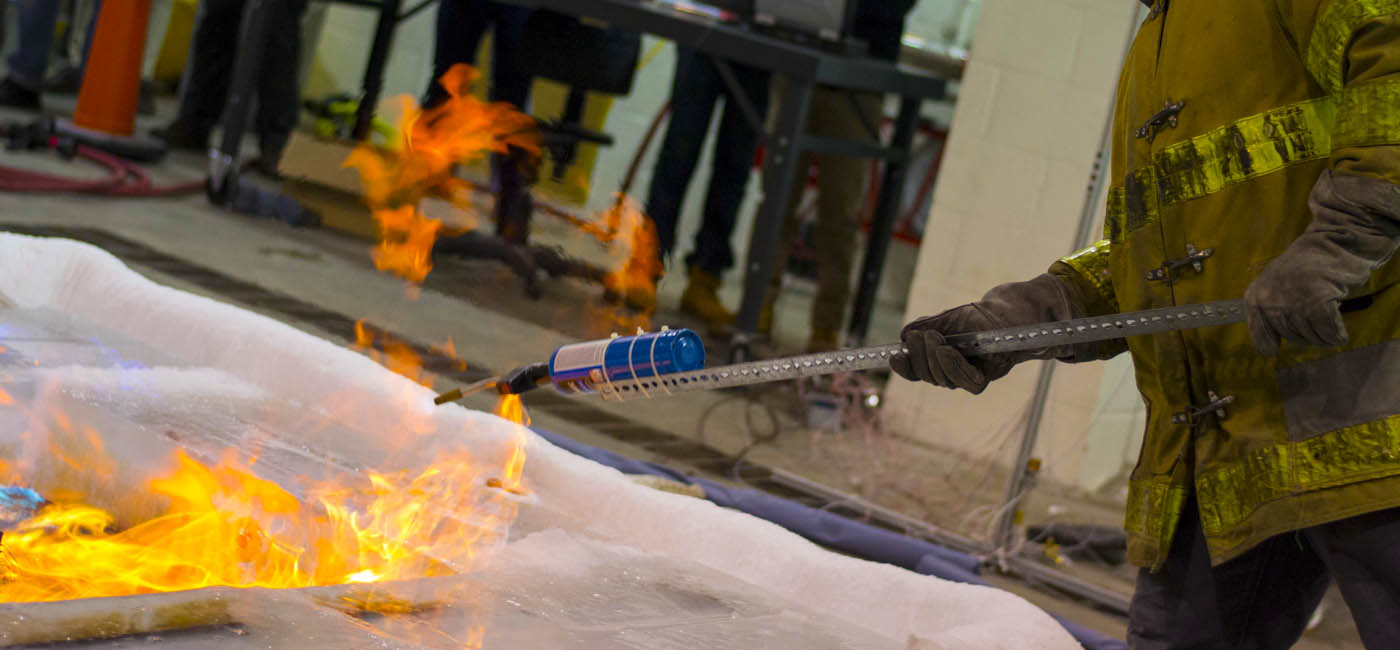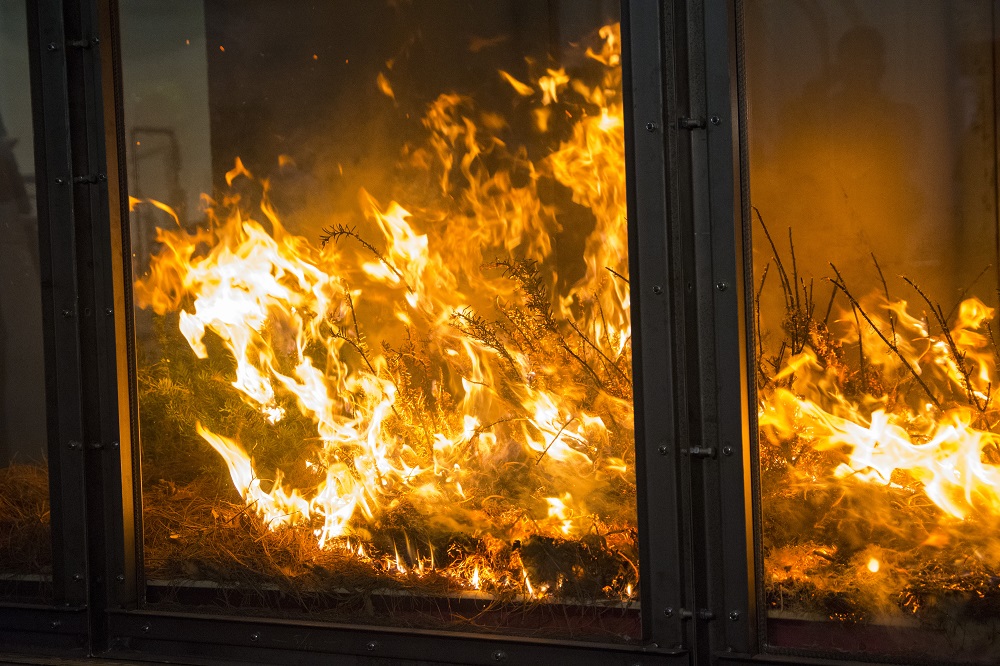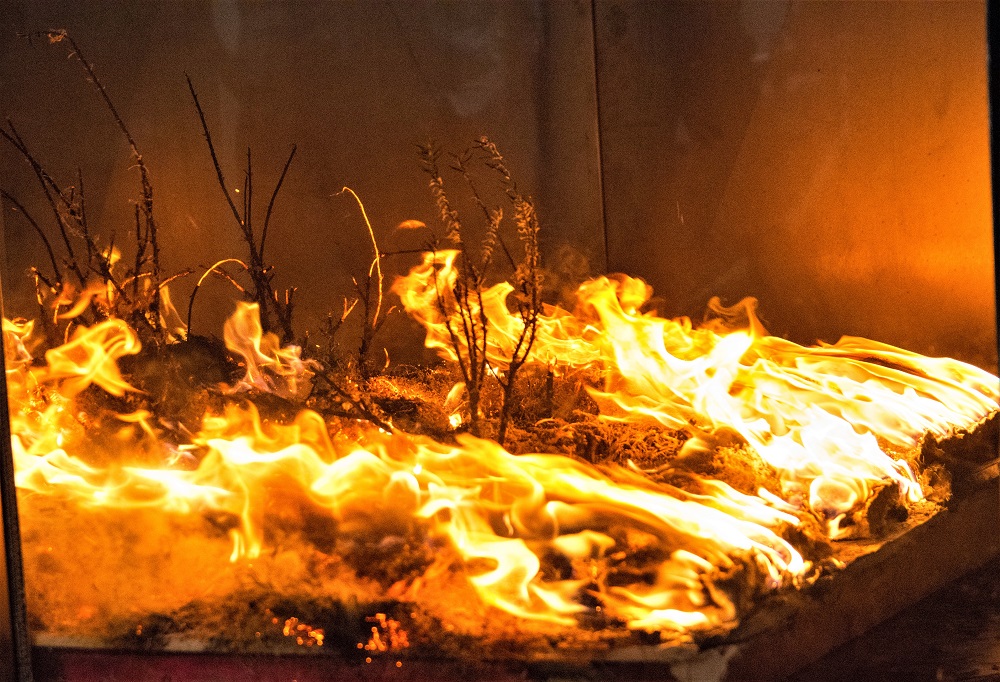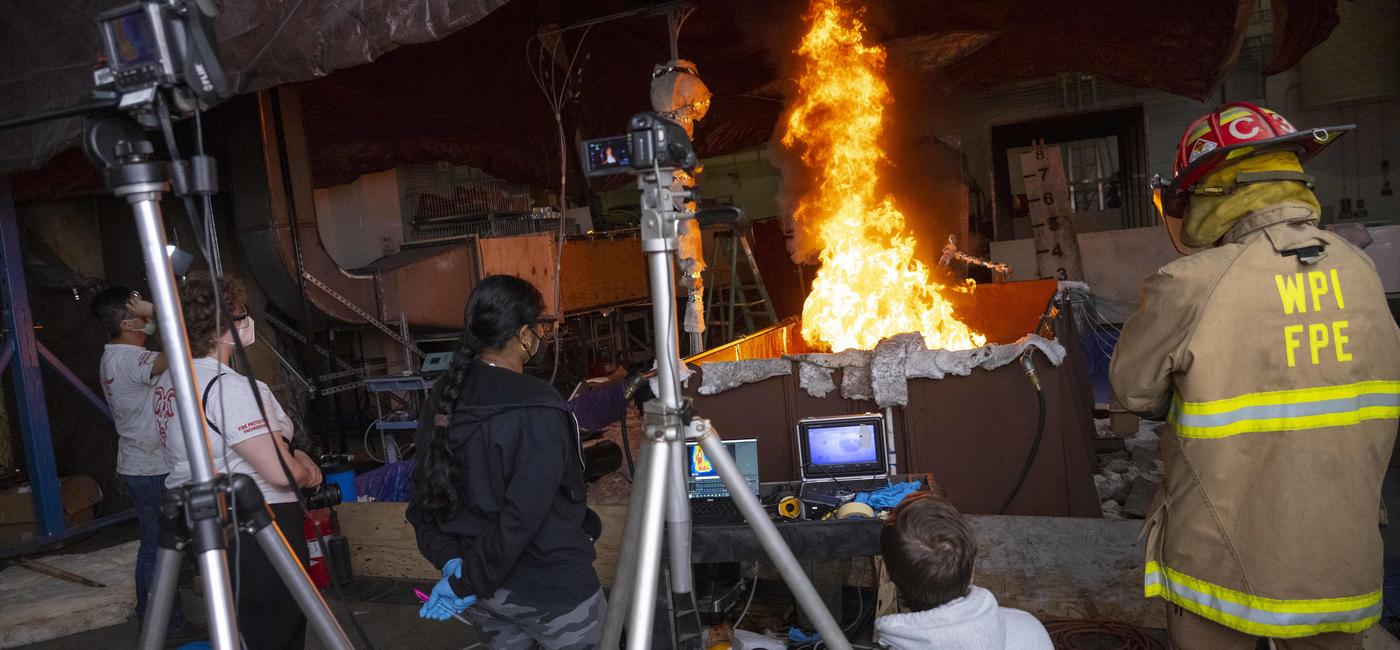As part of a larger research effort focused on the design and development of a next-generation fire attack hose, a team of faculty members and students at Worcester Polytechnic Institute (WPI) has launched a fire department survey and associated online database to gather and document information on actual hose burn-through incidents nationwide. The creation of this database is a key element of the first phase of a long-term project that aims to understand the flammability and limits of current fire attack hoses; define the scope and impact of burn-throughs; and, ultimately, use that data to create a more fire-resistant attack hose.
The survey was rolled out in March. In less than three weeks, more than 150 fire departments have reported burn-through incidents and have detailed issues experienced as a result of those hose failures.
Although it seems counterintuitive: attack hoses, the key firefighting tool used by firefighters across the country, are not designed to resist the very element they are combating. In reality, existing hoses—usually made from woven cotton and rubber—can burn through while in use.
One year ago, this terrifying scenario played out in Boston. On March 26, 2014, a fire in the city's Back Bay neighborhood claimed the lives of Lt. Edward J. Walsh Jr. and Firefighter Michael Kennedy. The intensity of that fire contributed to the burn-through of Firefighter Kennedy's hose.
WPI's fire attack hose research project is being led by co-principal investigators Associate Professor Kathy Notarianni and research engineer Raymond Ranellone of WPI's Department of Fire Protection Engineering. They have assembled an interdisciplinary team of faculty members and students from civil, mechanical, and chemical engineering. The project began in November 2014 with funding from the Last Call Foundation, which was established by Firefighter Kennedy’s mother, Kathy Crosby-Bell, to provide funding, education, and research to advance the safety needs of firefighters.
"The Last Call Foundation is proud to support WPI’s research on this extremely important topic," said Crosby-Bell. "The work we are enabling—gathering information on the frequency of burn-throughs across the nation—is especially significant as the resulting database will contribute invaluable information to this ongoing research effort. The responsiveness the fire service community has already demonstrated in responding to the survey is encouraging and I urge them to continue to support and inform this effort. The survey is a critical component of WPI's work, as investigators continue to define the scope and seriousness of this issue."
"This work must be done in cooperation with the fire service," added Notarianni. "The success of this research requires support and feedback from all of the constituencies involved in the firefighting effort."
The information gathered from the national database informs and supplements other aspects of this research, including:
- the review of national standards that currently drive the manufacture of fire attack hose to evaluate how the type and level of required testing translates to performance in actual fire conditions;
- creation of a taxonomy of performance metrics solidly based on firsthand experience of firefighters in the use and maintenance of fire attack hose;
- documentation of the materials used in current fire attack hose manufacturing and investigation of their performance when exposed to fire/thermal stress;
- investigation of other materials designed for use in high-temperature environments and explore their suitability for use in fire attack hoses; and
- the organization of a workshop at WPI to vet their research findings with a variety of stakeholders, including representatives of the fire service.
This project is the most recent effort in an extensive body of work by WPI researchers on fire safety and the development of tools and technologies to aid the fire service. Much of this research is focused on developing technological solutions to problems that threaten the safety and health of first responders. It has been directed by faculty members in WPI’s Department of Fire Protection Engineering, which was launched more than 30 years ago and currently offers one of just three graduate-level fire engineering programs in the country, and its Department of Electrical and Computer Engineering.
To date, this research has produced technology for precisely locating first responders within buildings; monitoring their physiological status; alerting them to the imminent onset of flashover; and, most recently, warning them when they are in the presence of toxic gases in or near the fire ground. In 2014, WPI established the Center for First Responder Technology to advance these and related interdisciplinary research efforts.
"As demonstrated by more than three decades of research and development, WPI is committed to the effort to ensure that firefighters and first responders across the country are equipped with the most sophisticated and supportive tools and technologies to enhance their effectiveness in the field and to better ensure their safety,” said David Cyganski, dean of engineering ad interim, professor of electrical and computer engineering, and co-founder of the Center for First Responder Technology. “We believe that the database we are building will give us invaluable information that will ultimately lead to the development of a more resistant fire hose as well as improved firefighting practices."
Fire departments can access the WPI Fire Attack Hose Burn-Through Survey here.
For more information about the Last Call Foundation, visit www.lastcallfoundation.org.



